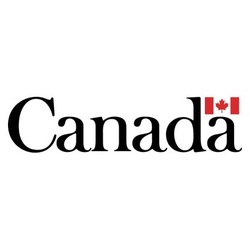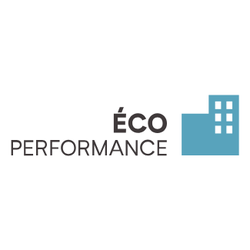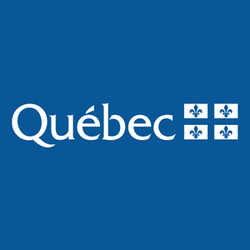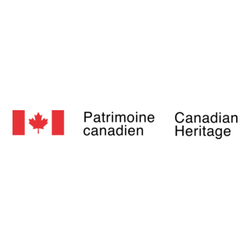
Community Interaction Program — Restoration and/or protection of biodiversity
At a glance
- Maximum amount : 200,000 $
- Up to 70% of project cost
- Open Date : March 1, 2024
- Closing date : October 15, 2024
- Agriculture, forestry, fishing and hunting
- Other services (except public administration)
- Quebec
- Non-profit
- Public or Parapublic institution
- All revenue ranges
- All organization sizes
- Indigenous Peoples
- Research
- Environment
- Animal Protection
- Economic, Social and Community Development
- General public
- Indigenous peoples
- Rural / Remote communities
- All structures
- Local
- Regional
- Provincial
Overview
Get up to $200,000 in funding for a restoration project arising from a specific environmental issue that helps conserve biodiversity and improve water quality in the St. Lawrence ecosystem.
Activities funded
The Community Interaction Program supports community projects focused on conserving and improving the St. Lawrence ecosystem. Eligible activities aim to enhance biodiversity, support sustainable use, and improve water quality in the region.
- Awareness-raising activities addressing specific environmental problems and promoting short-term concrete actions.
- Study projects aimed at developing action plans for specific environmental issues.
- Study-action projects that combine feasibility studies with implementation to address environmental issues.
- Restoration projects focusing on shoreline clean-up, stabilization, revegetation, and habitat restoration in the St. Lawrence.
- Protection projects focusing on conserving important areas and promoting sustainable uses of the St. Lawrence for biodiversity protection.
Eligibility
Eligibility for the Community Interaction Program requires adherence to organizational criteria specific to the applicant's status and location.
- The applicant must be a non-profit non-government organization that has been legally constituted for at least one year.
- The organization must have an established place of business in Quebec.
- The applicant must demonstrate they have a charter under Quebec’s Companies Act (Part III) or its equivalent.
- Indigenous communities are also eligible.
- Individuals, departments, government agencies, municipalities, educational institutions, and private companies are not eligible.
Who is eligible?
The Community Interaction Program is intended for non-profit non-government organizations and Indigenous communities that have been legally constituted for at least one year, with a place of business in Quebec. Organizations must have a charter under Quebec's Companies Act (Part III) or its equivalent.Who is not eligible
This grant is not available to certain organizations due to their legal status or the nature of their operations. The restrictions ensure that support is provided to appropriate entities capable of contributing to the conservation of the St. Lawrence ecosystem.
- Individuals.
- Government departments and agencies.
- Municipalities.
- Educational institutions.
- Private companies.
Eligible expenses
This grant supports community-initiated projects aimed at raising awareness, conducting studies, implementing action plans, and restoring or protecting the St. Lawrence ecosystem. Eligible projects encompass a range of activities focused on environmental preservation and sustainable use of natural resources.
- Awareness-raising activities like seminars, forums, symposiums, and information sessions targeting specific environmental issues.
- Study projects that develop action plans, conduct characterization studies, inventories, feasibility studies, and prepare plans and specifications.
- Study-action projects that involve developing an action plan followed by implementation actions.
- Restoration activities such as shoreline clean-up, stabilization, revegetation, and restoration of sensitive habitats.
- Protection projects focused on conserving important areas, promoting sustainable use, and access control to protect sensitive environments.
Eligible geographic areas
This program is specific to projects implemented in designated areas within the St. Lawrence region in Quebec, Canada. It supports initiatives that contribute to the conservation of biodiversity and the sustainable management of resources in these regions.
- Areas between Cornwall and Gaspé on the south shore, including the Québec portion of Chaleur Bay and the Magdalen Islands.
- The area between Carillon and Blanc Sablon on the north shore, including Anticosti Island and the Saguenay River.
- Main tributaries and essential sections of secondary tributaries within the St. Lawrence ecosystem.
Selection criteria
The evaluation and selection of projects for the Community Interaction Program are based on specific criteria that assess the potential impact and effectiveness of the proposed projects.
- Description of the environmental problem and rationale for the project.
- Environmental scope and anticipated impacts of the project activities.
- Level of community and partner involvement, with evidence of partnerships and support.
- Identification and engagement of the target group.
- Effectiveness of the communications plan associated with the project.
- Realistic budget estimate and financial planning.
- Feasibility of the schedule and work methodologies proposed.
- Use of performance indicators to measure project outcomes and their sustainability.
How to apply
Verification of the eligibility of the organization
- Ensure that your organization is a non-governmental and non-profit organization, legally established for at least one year and based in Quebec.
- Check that your organization has a charter according to the Companies Act of the Government of Quebec (Part III) or its equivalent.
Project Eligibility Verification
- Ensure that your project meets the objectives of the PIC to improve the St. Lawrence ecosystem.
- Verify that the planned activities comply with the eligibility criteria.
Consultation with a project agent
- Contact a project agent to confirm eligibility and obtain advice on the preliminary proposal.
- Send a preliminary proposal at least one month before the deadline to receive feedback.
Preparation of the request
- Fill out the application form by including all the required information.
- Prepare the necessary attachments to support your project.
- Obtain the necessary approvals and permits under applicable laws and regulations.
Presentation of the request
Confirmation of shipment
- For postal delivery, keep the post receipt as proof of shipping date.
- For email delivery, keep the electronic transmission confirmation.
- For fax delivery, keep the automated sending confirmation.
Additional information
The project submission must include various required documents for assessment, including ownership clarifications if activities are performed on non-owned land. Contacting a project officer is advised for eligible expense clarifications and applying to other federal or provincial departments for partnerships is encouraged but not included in CIP funding.
- Clarify land ownership and obtain the required approvals if project activities occur on non-owned land.
- Contact a project officer for clarification regarding eligible expenses not listed in the guide.
- The program allows for project partnerships with federal or provincial departments other than ECCC or MELCC, although these are not part of the CIP funding.
Contacts
Frequently Asked Questions about the Community Interaction Program — Restoration and/or protection of biodiversity Program
What is the Community Interaction Program — Restoration and/or protection of biodiversity?
How much funding can be received?
What expenses are eligible under Community Interaction Program — Restoration and/or protection of biodiversity?
What is the deadline to apply?
Is the Community Interaction Program — Restoration and/or protection of biodiversity a grant, loan, or tax credit?
Who are the financial supporters of the Community Interaction Program — Restoration and/or protection of biodiversity?
Who is eligible for the Community Interaction Program — Restoration and/or protection of biodiversity program?
Who can I contact for more information about the Community Interaction Program — Restoration and/or protection of biodiversity?
Where is the Community Interaction Program — Restoration and/or protection of biodiversity available?
Are Indigenous Peoples eligible for the Community Interaction Program — Restoration and/or protection of biodiversity program?
More programs like this

ÉcoPerformance — Recommissioning of building mechanical systems
Gouvernement du Québec
Innovative Projects Program
Hydro-Québec
Technoclimat
Environnement Québec (MELCC)
Financial assistance for the hiring of a person to integrate a job on a long-term basis
Gouvernement du Québec
International Climate Cooperation Program (ICCP)
Environnement Québec (MELCC)
Acting to support growth
City of Montreal (MTL)
Greater Montreal Climate Fund — 2025-2026 Call for projects
Greater Montreal Climate Fund
Social Economy Support Fund
Social Economy Mauricie
Support program for economic development projects (PAPDE) — Component 2 : Support for the development of strategic sectors and regions
Gouvernement du Québec